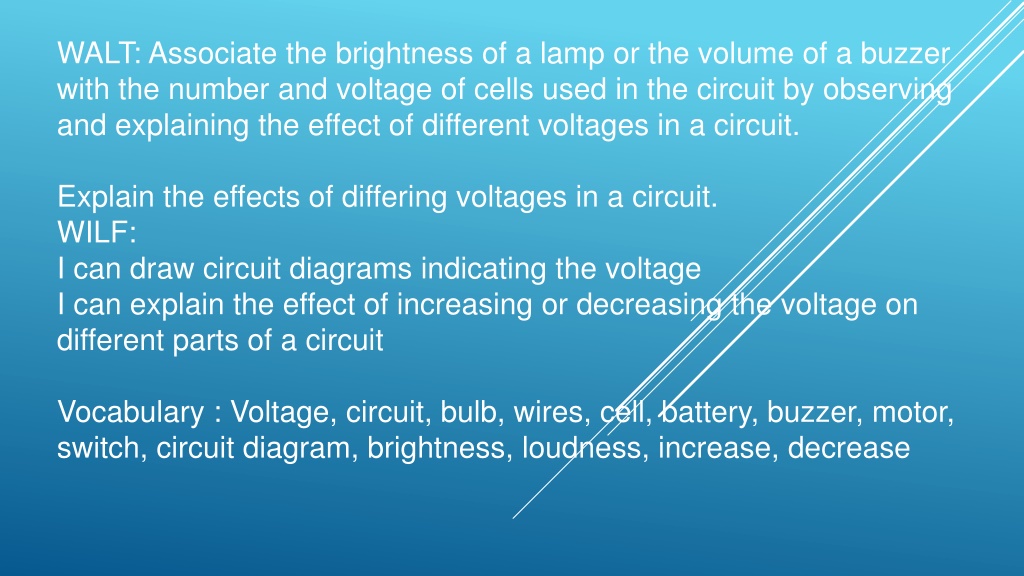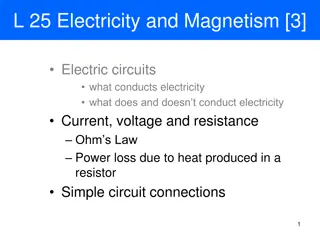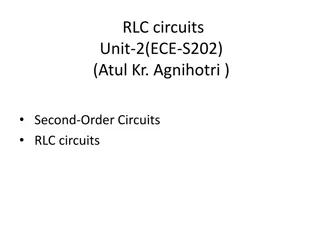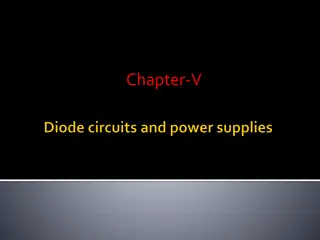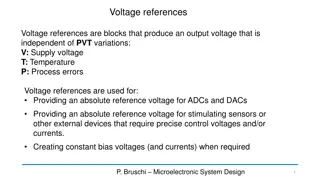Understanding Voltage in Circuits: Effects and Applications
Explore the concept of voltage in circuits, its significance in electricity, and the effects of varying voltages on components like bulbs, motors, and buzzers. Discover how different voltage levels impact the brightness of a bulb, the loudness of a buzzer, and the overall performance of electrical devices, along with the relationship between voltage and power consumption.
Download Presentation

Please find below an Image/Link to download the presentation.
The content on the website is provided AS IS for your information and personal use only. It may not be sold, licensed, or shared on other websites without obtaining consent from the author. Download presentation by click this link. If you encounter any issues during the download, it is possible that the publisher has removed the file from their server.
E N D
Presentation Transcript
WALT: Associate the brightness of a lamp or the volume of a buzzer with the number and voltage of cells used in the circuit by observing and explaining the effect of different voltages in a circuit. Explain the effects of differing voltages in a circuit. WILF: I can draw circuit diagrams indicating the voltage I can explain the effect of increasing or decreasing the voltage on different parts of a circuit Vocabulary : Voltage, circuit, bulb, wires, cell, battery, buzzer, motor, switch, circuit diagram, brightness, loudness, increase, decrease
What is a volt? What do we mean by voltage? Why is it significant when we consider electricity?
Watch this bbc video clip to help you understand what volts and voltage are:
CURRENT AND VOLTAGE Click the battery to view the video.
These batteries all contain a different amount of volts this is because they can be used to power different things. Generally appliances that require more power will need a higher of voltage to power them.
How Many Volts? Photo courtesy of Asim18 and GFDL (commons.wikimedia.org) - granted under creative commons licence attribution
CURRENT AND VOLTAGE Current: This is the steady flow of electrons. This is measured in amperes (amps) Voltage: This is the force that makes the electric current flow. This is measured in volts (V) The greater the voltage, the more current will flow.
What Difference Do the Volts Make? What do you predict will happen to a bulb, motor or buzzer depending on the voltage of the cell or battery? Generally the higher the voltage, the brighter a bulb will be! This links to what we said earlier, the higher the voltage the more power is available to the appliance in this case the bulb.
Lets watch this next video which shows us how different voltages affect the brightness of a bulb. https://www.bbc.co.uk/bitesize/clips/z6qd7ty
Task: If we were in school and could give you the equipment, we could ask you to create more circuits which reflect different voltages and the effect this may have on the brightness of the bulb. Unfortunately, we cannot do this. Instead click on the link below to play the interactive games. They will show you some circuits (so that you can revise what you did last week) and will also show you what happens in circuits when you add more power (volts) Ch. 1 play the interactive game and write a short description of how a volt can affect a circuit Ch. 2 and 3 play the interactive game and write a paragraph explaining what volts are and how they are used in circuits. Compare by predicting how much voltage would be needed to power a) a light bulb, b) a hairdryer and c) a TV https://www.bbc.co.uk/bitesize/topics/zq99q6f/articles/z t8vg82
